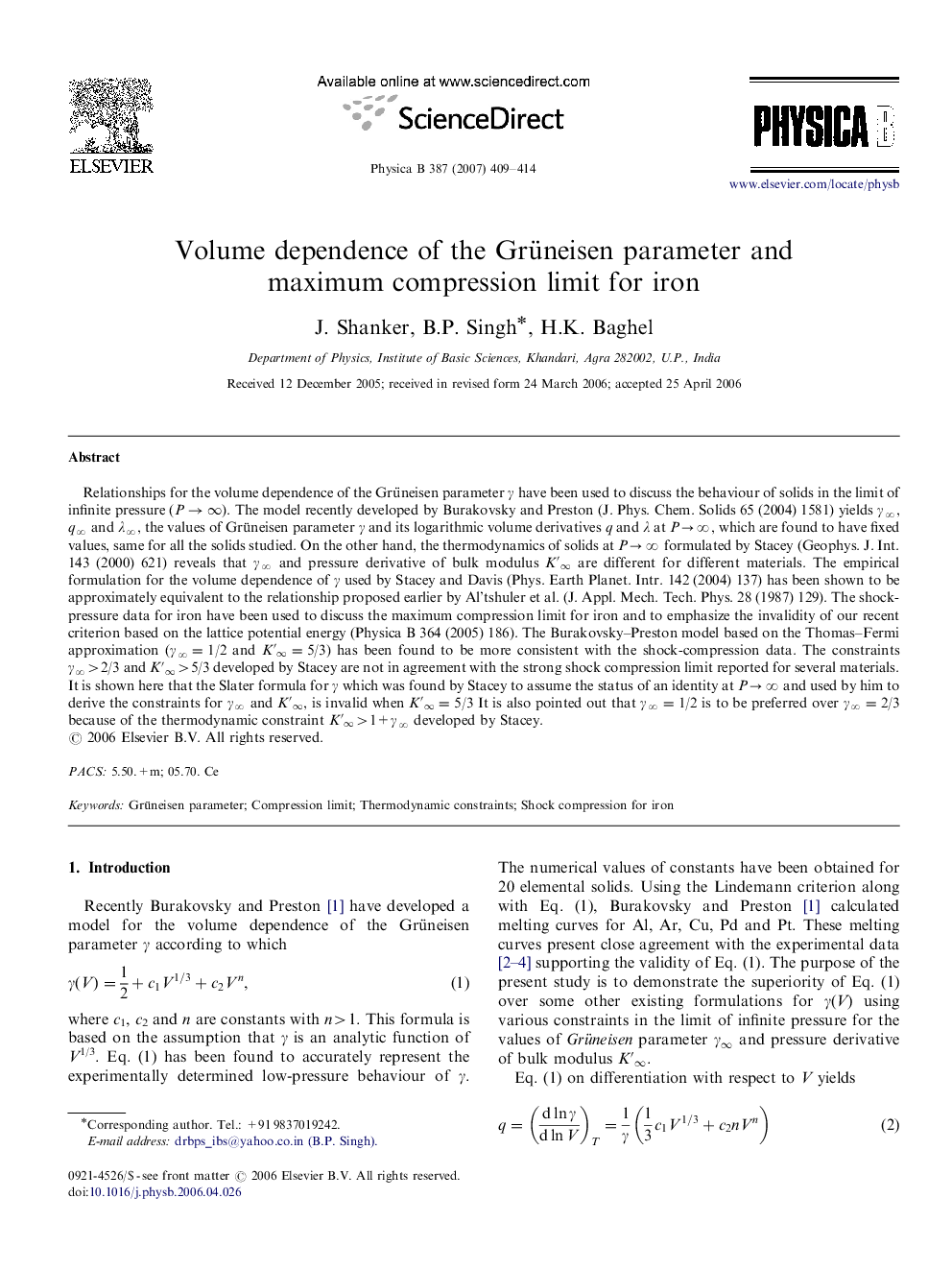| Article ID | Journal | Published Year | Pages | File Type |
|---|---|---|---|---|
| 1816141 | Physica B: Condensed Matter | 2007 | 6 Pages |
Relationships for the volume dependence of the Grüneisen parameter γ have been used to discuss the behaviour of solids in the limit of infinite pressure (P→∞P→∞). The model recently developed by Burakovsky and Preston (J. Phys. Chem. Solids 65 (2004) 1581) yields γ∞, q∞ and λ∞, the values of Grüneisen parameter γ and its logarithmic volume derivatives q and λ at P→∞, which are found to have fixed values, same for all the solids studied. On the other hand, the thermodynamics of solids at P→∞ formulated by Stacey (Geophys. J. Int. 143 (2000) 621) reveals that γ∞ and pressure derivative of bulk modulus K′∞K′∞ are different for different materials. The empirical formulation for the volume dependence of γ used by Stacey and Davis (Phys. Earth Planet. Intr. 142 (2004) 137) has been shown to be approximately equivalent to the relationship proposed earlier by Al’tshuler et al. (J. Appl. Mech. Tech. Phys. 28 (1987) 129). The shock-pressure data for iron have been used to discuss the maximum compression limit for iron and to emphasize the invalidity of our recent criterion based on the lattice potential energy (Physica B 364 (2005) 186). The Burakovsky–Preston model based on the Thomas–Fermi approximation (γ∞=1/2 and K′∞K′∞=5/3) has been found to be more consistent with the shock-compression data. The constraints γ∞>2/3 and K′∞K′∞>5/3 developed by Stacey are not in agreement with the strong shock compression limit reported for several materials. It is shown here that the Slater formula for γ which was found by Stacey to assume the status of an identity at P→∞ and used by him to derive the constraints for γ∞ and K′∞K′∞, is invalid when K′∞K′∞=5/3 It is also pointed out that γ∞=1/2 is to be preferred over γ∞=2/3 because of the thermodynamic constraint K′∞K′∞>1+γ∞ developed by Stacey.
